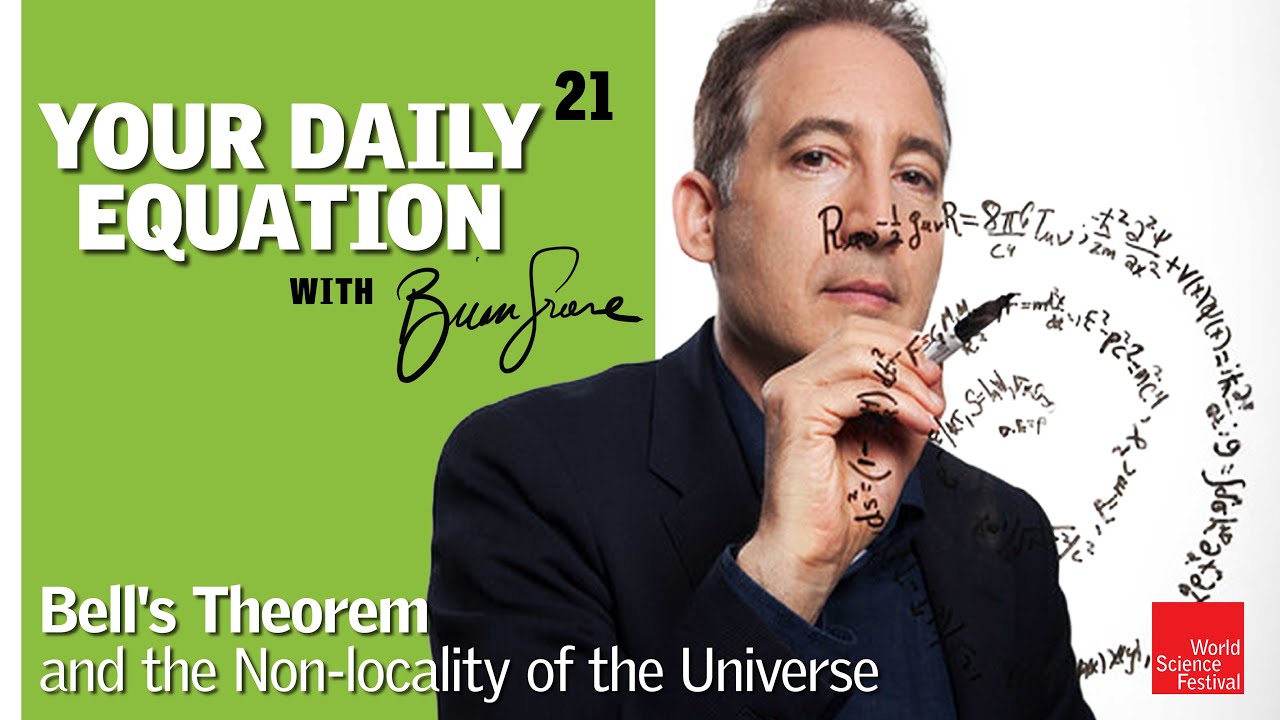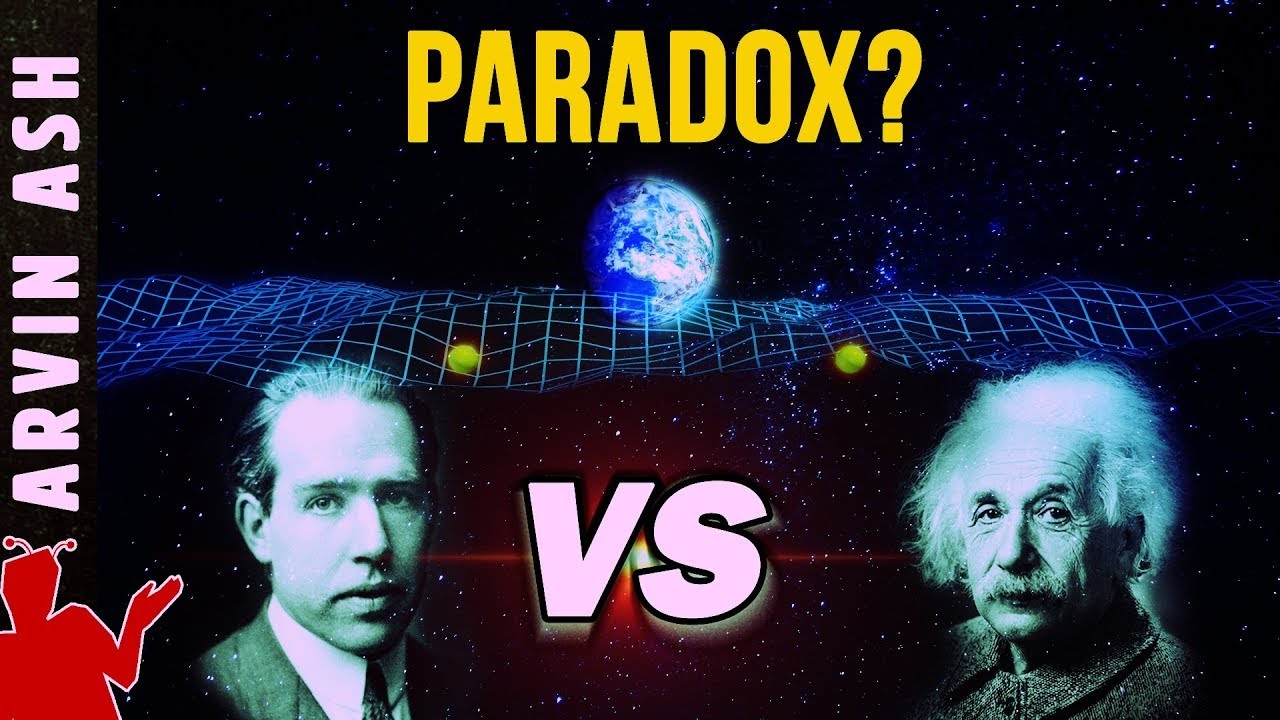How Physicists Proved The Universe Isn't Locally Real - Nobel Prize in Physics 2022 EXPLAINED
TLDRThe Nobel Prize in Physics was awarded to John Clauser, Alain Aspect, and Anton Zeilinger for their work disproving the concept of local realism, showing that the universe is not composed of particles with pre-determined properties. Their experiments, building on Bell's theorem, demonstrated the reality of quantum entanglement and the non-local nature of the universe, challenging Einstein's deterministic view and laying the foundation for quantum computing.
Takeaways
- 🏆 John Clauser, Alain Aspect, and Anton Zeilinger were awarded the Nobel Prize in Physics for their work on quantum mechanics, specifically proving that the Universe isn't locally real.
- 🤔 The concept of 'local realism' consists of two ideas: 'locality,' meaning objects are only affected by their immediate surroundings, and 'realness,' which pertains to the inherent properties of particles regardless of observation.
- 🌌 Einstein's view of a 'real' universe was challenged by the counter-group of anti-realists, like Bohr, who believed particles only decided on their properties upon measurement.
- 🐱 Schrödinger's cat is a famous thought experiment illustrating the superposition of states until observation collapses the wave function into a definite state.
- 💡 The EPR paper by Einstein, Podolsky, and Rosen presented a thought experiment on quantum entanglement, suggesting that quantum mechanics might be incomplete due to the instantaneous correlation of entangled particles.
- 🔄 Entanglement implies that the properties of two particles can be intrinsically linked, and a change in one instantaneously affects the other, regardless of distance.
- 📈 John Bell's work, known as Bell's theorem or inequalities, aimed to test the reality of quantum mechanics against Einstein's local realism, proposing a way for the universe to 'pick a side'.
- 🧪 The CHSH inequality, an extension of Bell's theorem, made Bell's theoretical work experimentally testable and was pivotal in demonstrating the non-local nature of the universe.
- 🏅 The Nobel Prize winners' experiments showed that quantum entanglement could be transferred, leading to phenomena like quantum teleportation, which are foundational to the field of quantum computing.
- 🚫 Despite the strange phenomena observed at the quantum level, these do not allow for faster-than-light communication, as the inherent randomness at the source and measurement points prevents the transmission of information.
Q & A
Who were awarded the Nobel Prize in Physics on October 4th for their work on the concept of local realism in the Universe?
-John Clauser, Alain Aspect, and Anton Zeilinger were awarded the Nobel Prize in Physics for their work that demonstrated the Universe is not locally real.
What does the concept of 'local realism' entail?
-Local realism is a concept that combines two ideas: locality, which suggests that objects are only influenced by their immediate surroundings, and realism, which implies that physical properties exist regardless of observation.
How did Einstein's view on local realism differ from the anti-realists' perspective?
-Einstein believed in a universe that was real, where particles like atoms and electrons had definite properties inherent to them, regardless of whether they were being measured. In contrast, anti-realists, like Bohr, argued that particles only decided on their properties when they were measured, existing in a wave function of possible states beforehand.
What is the EPR paradox and what did it aim to demonstrate?
-The EPR paradox, proposed by Einstein, Podolsky, and Rosen, is a thought experiment that aimed to show that quantum mechanics was either incomplete or possibly incorrect. It focused on the concept of entanglement and argued that if particles were entangled, changes to one would instantaneously affect the other, which seemed to violate the principle of locality.
What did John Bell's work, known as Bell's theorem, seek to do?
-Bell's theorem sought to resolve the debate between Einstein's hidden variables and the anti-realists' wave function view of quantum mechanics. It aimed to get the universe to 'pick a side' by providing a way to experimentally test whether local realism or quantum mechanics' predictions were correct.
How do the properties of a photon, such as polarization, play into the discussion of local realism?
-Photons have a property called polarization, which describes the direction of the light wave's oscillation. Experiments with polarizers and photons have shown that measuring a particle changes its state, which in turn affects the behavior of entangled particles, supporting the idea that quantum mechanics and non-local realism are correct.
What is the significance of the CHSH inequality in the context of the Nobel Prize-winning work?
-The CHSH inequality, developed by John Clauser and others, is an extension of Bell's theorem that makes it possible to test the theorem experimentally. It involves measuring the correlation between the polarizations of entangled photons and has been crucial in demonstrating the non-local nature of quantum mechanics.
How did Alain Aspect and Anton Zeilinger contribute to the understanding of quantum entanglement?
-Alain Aspect and Anton Zeilinger closed important loopholes in the experimental verification of quantum entanglement and demonstrated that entanglement could be transferred to other particles through a process known as quantum teleportation.
What is the quantum computing revolution and how does it relate to the phenomena discussed in the script?
-The quantum computing revolution refers to the development of quantum computers that leverage the principles of quantum mechanics, such as entanglement and superposition, to perform computations more efficiently than classical computers. The phenomena discussed in the script, like entanglement and non-local realism, are fundamental to the operation of quantum computers.
Why can't the phenomena of quantum entanglement be used for faster-than-light communication despite the seemingly instantaneous effects?
-While quantum entanglement appears to have instantaneous effects, it cannot be used for faster-than-light communication because the process is inherently random and does not allow for the loading of information onto the communication channel. This means that it does not violate Einstein's principle that the speed of light is a fundamental limit in the universe.
What was the reaction of Richard Feynman to John Clauser's experimental results?
-据说, John Clauser 在得到实验结果后兴奋地跑去找 Richard Feynman 告诉他这个消息, 但Feynman 以他典型的风格, 因为Clauser 曾经怀疑量子力学, 把他赶出了办公室, 并告诉他现在去做一些'真正的物理学'。
Outlines
🌌 Nobel Prize for Quantum Physics
The first paragraph introduces the Nobel Prize winners John Clauser, Alain Aspect, and Anton Zeilinger, who demonstrated that the Universe is not locally real. It discusses the concept of locality and realness, and how Einstein's ideas about the universe being deterministic were challenged. The paragraph outlines the historical context of the debate between Einstein and quantum mechanics proponents like Bohr, focusing on the EPR paradox and the concept of entanglement.
💡 Bell's Theorem and Experimental Confirmation
The second paragraph delves into John Bell's theoretical work, known as Bell's theorem or inequalities, which aimed to resolve the debate between Einstein's hidden variables and the quantum mechanics view of reality. It explains the EPR thought experiment and introduces the concept of photon polarization. The paragraph also describes the experimental setup that tested Bell's theorem, involving entangled photons, polarizers, and measurement outcomes, leading to the conclusion that the universe is non-local.
🏆 Quantum Entanglement and Teleportation
The final paragraph discusses the experimental confirmation of quantum entanglement and its implications for quantum mechanics and computing. It mentions the work of the Nobel laureates in closing the loopholes of the experiment and demonstrating quantum teleportation. The paragraph emphasizes that while entanglement shows particles can communicate instantaneously, this does not allow for faster-than-light communication, as the core phenomenon is inherently random and does not violate Einstein's theory of relativity.
Mindmap
Keywords
💡Nobel Prize in Physics
💡Local Realism
💡Quantum Entanglement
💡Hidden Variables
💡Bell's Theorem
💡CHSH Inequality
💡Polarization
💡Quantum Teleportation
💡Quantum Computing
💡Fundamental Limitations
💡Einstein's View of the Universe
Highlights
John Clauser, Alain Aspect, and Anton Zeilinger were awarded the Nobel Prize in Physics for their work on proving that the Universe isn't locally real.
The concept of locality suggests that objects are only affected by their immediate surroundings, and no information can travel faster than light.
Realness, in quantum mechanics, refers to the definite properties of particles, atoms, and electrons, regardless of observation.
Einstein's view of a deterministic universe where particles have inherent properties was challenged by the counter-group led by Bohr, who believed properties only solidified upon measurement.
Schrodinger's cat is a famous thought experiment illustrating the superposition of states until observation.
The EPR paper by Einstein, Podolsky, and Rosen presented a thought experiment on quantum entanglement, suggesting that quantum mechanics might be incomplete.
Entanglement implies that the properties of two particles can be intrinsically linked, and a change in one instantaneously affects the other, regardless of distance.
Einstein's argument against instantaneous communication between entangled particles was based on the violation of locality and the speed of light limit.
John Bell's work, Bell's theorem, aimed to resolve the debate between Einstein's hidden variables and the quantum mechanics view of reality.
The concept of photon polarization and its measurement through polarizers is crucial to understanding quantum mechanics and the EPR paradox.
The CHSH inequality, developed by John Clauser and others, provided a way to experimentally test Bell's theorem and the nature of quantum entanglement.
In 1972, John Clauser's experimental setup confirmed quantum mechanics predictions and disproved Einstein's local realism.
Alain Aspect and Anton Zeilinger closed remaining loopholes in the experiment and demonstrated quantum teleportation, further solidifying quantum entanglement.
Quantum entanglement is a fundamental aspect of the modern quantum computing revolution, potentially allowing for superior computational capabilities.
Despite the strange phenomena at the quantum level, the speed of light remains a fundamental limit, and quantum communication cannot surpass this speed.
The inherent randomness in quantum phenomena ensures that no information can be loaded onto the communication channel, thus not violating Einstein's theory of relativity.
Einstein's fundamental contribution to physics, the theory of relativity, remains unchallenged by quantum mechanics despite the deterministic view of the universe being incorrect.
The Nobel Prize winners' work has shown the universe to be stranger than even Einstein had imagined, with particles communicating in ways not fully understood.
Transcripts
Browse More Related Video

Why Did Quantum Entanglement Win the Nobel Prize in Physics?

Quantum Entanglement: 2022 Nobel Prize in Physics

Bell's Inequality: The weirdest theorem in the world | Nobel Prize 2022

Your Daily Equation #21: Bell's Theorem and the Non-locality of the Universe

The EPR Paradox & Bell's inequality explained simply

Nobel Prize lecture: John Clauser, Nobel Prize in Physics 2022
5.0 / 5 (0 votes)
Thanks for rating: